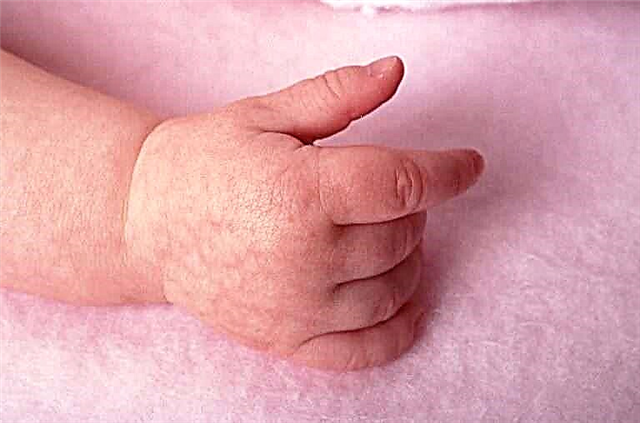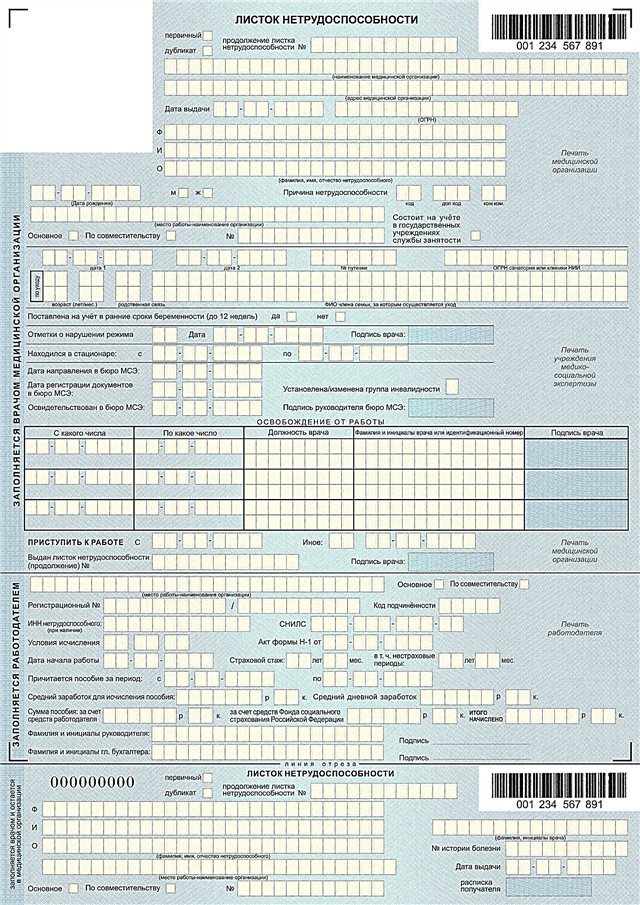
The pregnant woman is waiting for the appearance of contractions and at the same time experiences an animal fear in front of them. Popular rumor attributes the strongest pain sensations to this stage of childbirth. If experienced mothers go for a second or third birth and already have a good idea of what awaits them, then women who are impatiently awaiting the appearance of their first child are at a loss. We will talk about the features and sensations, the timing and duration of contractions in women giving birth for the first time in this article.
How does it start?
Childbirth is the natural process of completing bearing a baby. Nature allotted him exactly 10 lunar months in order to become a real man from one crushing cell, just still very small. Labor can begin both on time and earlier or later. According to statistics, the onset of labor in primiparous women usually occurs either at 39-40 weeks, or at 40-42 weeks of pregnancy. The date indicated in the exchange card is only a guideline for the doctor and the pregnant woman, only 5% of pregnant women give birth strictly in the PDR.

Labor can begin in different ways. From the discharge of water, from the exit of the mucous plug, from the beginning of the rhythmic contractions of the uterus - contractions. The latter option is considered the most preferable, since premature outpouring of water always complicates childbirth, even if it happens right on time. It is from contractions that the process of childbirth manifests itself in the vast majority of expectant mothers. Only 10% of women begin to give birth with the discharge of water.
Contractions are called contractions of the muscles of the uterus. Labor pains occur simultaneously with the opening of the cervix. This muscle tight ring was tightly closed throughout pregnancy, and the cervical canal inside it was closed with a mucous plug. The beginning of the opening of the neck is accompanied by contractions, which grow and become stronger as it expands.

Contractions begin suddenly, but develop gradually. True labor pains can be preceded by false, training ones. They can be observed from the 20th week of pregnancy, either appear later, or not appear at all. But before childbirth - in a couple of weeks or a little less - almost all women can from time to time feel a short-term tension of the uterus. This is the preparatory work of the female body before childbirth.
The purpose of labor contractions in childbirth is obvious - at the first stage, they are needed so that the cervix opens and clears the passage for the child who is to pass through the birth canal and be born. They compress the space inside the uterus, leading to rupture of the membranes; in the stage of active contractions, the water recedes and this is considered quite timely. Rhythmic contractions of the uterus slightly "push" the baby out. His time has come, there is no need to stay in the mother's womb any longer.

How to understand that childbirth has begun?
The first birth is always a lot of questions, the main one of which is how to recognize whether labor has begun and whether it is time to go to the hospital. Experienced obstetricians have an old joke on this topic, which says that if a woman has doubts about whether she is giving birth, then she does not give birth, because it is impossible to confuse childbirth and training contractions of the uterus. But women who are pregnant for the second or third time are in solidarity with obstetricians in this, they know for sure that doctors are not lying.

And the primiparous woman thinks that at any moment she can miss something important and be late in the hospital. As already stated, a few days before giving birth, the female body begins to prepare for the upcoming event. In the cells of the uterus, the amount of a special protein, actomyosin, begins to increase. It is responsible for the ability of cells to contract. At the same time, the woman's placenta and pituitary gland begin to produce oxytocin and relaxin. The first hormone increases the contractility of the female reproductive organ, and the second is responsible for softening the ligamentous apparatus, because during childbirth the uterus will change shape.

With these changes, the final preparatory stage begins, during which women are anxiously trying to find some "harbingers" about which she read on women's forums, and which can make it clear that childbirth is not far off. Harbingers include anxiety, mild depression, mood swings, sleep disturbances, insomnia, and more active training bouts. They appear like this: the stomach turns to stone, slightly "sips" in the sides and lower abdomen (due to the tension of the ligaments), and then they pass and can be repeated after half an hour, and after 5 hours, and after a day.

Precursor contractions are not regular, they come on their own and disappear in the same way. A woman can easily relieve discomfort simply by taking a shower, drinking a glass of milk or a No-Shpy pill, or even changing her body position. With a training bout, a pregnant woman can go to bed and doze off quite successfully.
Is it possible to miss the moment of the onset of real fights? Obviously not. After all, true contractions are rhythmic from the very beginning, they are repeated at regular intervals, the pain is no longer pulling, but a slight encircling character, the region of the back, lower back is drawn into it, the pain increases with each contraction. You will not be able to fall asleep, the No-Shpy pill or shower will not take effect. If labor pains have begun, it is unlikely that it will be possible to stop or weaken them. The duration of the bout will be the same each time. And this is the main difference between "harbingers" from real fights.

Latent stage - sensations
As soon as a woman notices that the tensions of the uterus become regular and obey a certain rhythm, we can say that the first stage of labor is already underway. It is called latent (hidden).
If there is no bloody discharge, the water has not receded, there is no need to rush to call an ambulance and rush to the hospital with special signals. The latency period during the first birth is usually the longest. It lasts up to 10-12 hours, on average, about 7-8 hours, and therefore there is a lot of time to put your nerves and feelings in order, psychologically tune in to a positive outcome of events and check things and documents collected in the hospital in advance.

During this period, the pain is moderate, gradually increasing. At the very beginning, they feel like the usual pain during menstruation, then they intensify, but the character remains the same. During pregnancy, women are taught correct breathing during childbirth. The latent period is the time to start applying theoretical knowledge in practice - to breathe correctly, taking deep breaths and exhales to relax as much as possible. You can walk, sing, communicate. You shouldn't lie in one position horizontally.
The sensations are wavy and growing. The contraction usually "originates" in the back, covers the lower back and moves first to the bottom, and then up the abdomen. Then the tension subsides, the woman gets the opportunity to rest a little before the next contraction.

During the latent phase, the contractions become longer. The earliest signs of labor pains can be determined by measuring the duration of the spasm and the interval between episodes of spasms. In this first period, the average duration of one contraction from the moment of tension to the moment of relaxation is 20-25 seconds. The spasms are repeated, first every half an hour, then every 20 minutes.
By the end of the latent stage of labor, contractions last 25 seconds and are repeated every 10-15 minutes. It is on this optimistic note that you should arrive at the hospital. By this time, the cervix reaches 3 centimeters. The next phase of contractions is active, it should take place in the family home. It will be safer for everyone.

Active phase
After opening the cervix by 3 centimeters, contractions become quite painful, and over time they begin to occur more often. The duration of the contraction is 25-60 seconds, between contractions it lasts within 3 minutes.
If you breathe correctly, maintain calmness, massage the sacral zone, the second stage of contractions can be experienced easier.


Contractions at this stage look like a prolonged spasm, the peak of the contraction becomes prolonged. Usually at this stage, during a normal delivery, water flows.
The duration of this period is 3-5 hours. At this time, it is advisable for a woman to be under the supervision of a doctor. Usually at this stage, they begin to monitor the condition of the fetus using CTG, the woman is already in the antenatal ward.
During the active period of contractions, the uterus opens on average up to 7 centimeters. This is already quite a lot, but not yet enough for the baby's head to pass through.

Transition period
This period is final. After it, attempts begin - the shortest period of childbirth. Transient contractions are also called the slowdown phase. The spasms themselves reach their maximum value for the entire period of childbirth. Each contraction lasts at least a minute and spasms are repeated every 2-3 minutes.
In general, the transition period lasts from half an hour to an hour and a half. During this time, the cervix opens up to 10-12 centimeters (depending on the size of the pelvis). This expansion is considered complete because it allows the baby's head to pass through.
In the transitional period, a woman begins to feel a pronounced pressure on the bottom, as it usually feels if you really want to empty the intestines.
But you can't push for now. The obstetrician will give the corresponding command already in the second phase of labor - in attempts.
If the woman in labor is not under the constant supervision of the doctor, then the feeling of pressure and a great desire to go to the toilet in a big way is a signal to call the medical staff and go to the delivery room.

What will happen next?
Further attempts begin. A woman needs to remain calm, breathe correctly, not make sudden exhalations until the end of the attempt, push only at the command of the obstetrician. During attempts, the baby will turn, bend the head, he also tries very hard to be born as soon as possible. The wrong behavior of a woman in this situation can lead to the child receiving a birth injury, the occurrence of acute hypoxia, which is extremely dangerous for him.
If you push on command, do not shout, do not bring your legs, do not pinch the perineum, breathe deeply, holding your breath for the moment of pushing and making a long, smooth exhalation at the end of the push, then the child can be born in the very near future.
The period of attempts at a favorable coincidence of circumstances and impeccable behavior of the woman in labor can last 20-30 minutes. Less often primiparas push for an hour and a half, and it is very rare to extend the period of pushing to 2 hours.

Once the baby is born, the woman can relax. Ahead is still the birth of the placenta, but it will no longer be so painful and unpleasant, especially since the baby is applied to the breast and the mother can already see the baby, hug, therefore, for many, the birth of the placenta proceeds relatively easily. This period takes 20 to 40 minutes.
This completes the birth. The woman is sent to the postpartum ward for rest, the baby is sent to the children's department in order to be treated, washed, examined by neonatologists. They will meet in a few hours, if there are no contraindications from either obstetricians or pediatricians.

Features of the first birth
Very often you can hear the opinion that the first birth is always harder and more painful than the subsequent ones. To some extent, it is true, but not in terms of pain, but rather because of the fear that a woman in labor experiences during her first birth. Lack of generic experience makes it difficult for a woman to choose a comfortable position during labor, from time to time she forgets what she was taught in the preparatory courses in the antenatal clinic. At such moments, some begin to panic. From the point of view of psychological readiness, women who have given birth earlier behave more disciplined in subsequent births.
The birth canal of a primiparous woman is narrower and less elastic. They are more difficult to stretch, and therefore even attempts are felt differently and last longer. The cervix also opens longer, and nothing can be done about this physiological aspect.

The first birth is more often accompanied by complications. This is not to say that during the second birth, unforeseen difficulties will not appear, there are always chances, but it is the primiparous who most often face such a phenomenon as primary or secondary weakness of the birth forces, when contractions do not lead to the opening of the cervix, and attempts do not move the baby forward ... In primiparas, tears or tears of the perineum and cervix are more common.
Complications are less dependent on the physiology of the firstborn, to a greater extent - this is a consequence of erroneous actions of the woman in labor, disobedience to the commands of the midwife or doctor leading the delivery.

Useful tips for primiparous
Women who are preparing to become mothers for the first time need to prepare for childbirth in advance. Preparation must be consistent and constructive. It is a clear understanding of the upcoming process without unnecessary fear and emotions, as well as an understanding of the order of one's own actions at different stages of childbirth that will become the key to a successful delivery.
You need to start preparing from the middle of pregnancy. Already at the 20th week, it makes sense to enroll in a school for expectant mothers who work in any antenatal clinic. Practicing gynecologists, children's doctors, psychologists will help prepare for the most important event in a woman's life as best as possible. Preparation includes the following information.
Expansion of the theoretical knowledge base about the physiological processes and biomechanism of childbirth.

- Learning the technique of correct breathing during contractions and attempts. It is necessary to practice breathing exercises during pregnancy carefully, half-heartedly, but it is recommended to devote at least 10-15 minutes a day to this. Then correct breathing will be natural and when labor begins, the woman will not have to remember how and when to breathe in and out in order to relieve pain and help herself and the baby. Breathing techniques help to feel less painful during the period of contractions, because due to the saturation of the body with oxygen, an increased production of endorphins occurs, which have an analgesic effect.

- Training in massage and self-massage techniques. From the latency period to the very attempts to relieve tension and pain, massage of the sacral zone, acupressure of the hand and face will help. Experienced obstetricians will show and tell all the techniques during the training.
- Psychological consultations. They will help form the correct attitude towards childbirth and labor pain. It has long been noted that the stronger a woman's fear of contractions, the more painful and longer they last. The psychologist will tell you about some techniques that allow a woman to be more confident in her strengths and abilities.
- Learning postures to make it easier to survive contractions. In real childbirth, before the period of attempts, a woman will be able to change her body position, adjusting to her own feelings.

- Legal and household assistance. During the course, the expectant mother will be told about what benefits and payments she can count on after the birth of the baby, how to arrange maternity leave, and also tell what things need to be collected at the hospital, when to do it, what documents will need to be provided upon hospitalization to the obstetric institution.
If there are no prejudices against partner childbirth, and you want to give birth in the presence of your husband or a close relative, you need to take care of this in advance. The spouse or other accompanying person needs to pass all the necessary tests.
Reviews
According to the reviews of women who gave birth for the first time, in practice, the understanding of the periods of childbirth is somewhat erased, in a state of stress it is not possible to reasonably reason and compare the theoretical knowledge gained earlier and what is happening right now. The sensations during contractions, according to reviews, are really very similar to menstrual ones, but only the place of localization of pain and the strength of sensations is completely different.

Women who are categorically against drug pain relief for contractions speak with great respect about the Lamaze preparatory method - a set of preparatory techniques that include not only breathing exercises, but also yoga, fitball exercises, meditation, aromatherapy, cold and warm compresses. They argue that pain was minimal, contractions were tolerable, and labor was generally easier and safer.
Some women deliberately refuse epidural anesthesia, because they consider contractions quite natural, and they tolerate them well, thanks only to breathing techniques, massage and the right mood.

For more information on when labor starts in primiparous women, see the next video.



